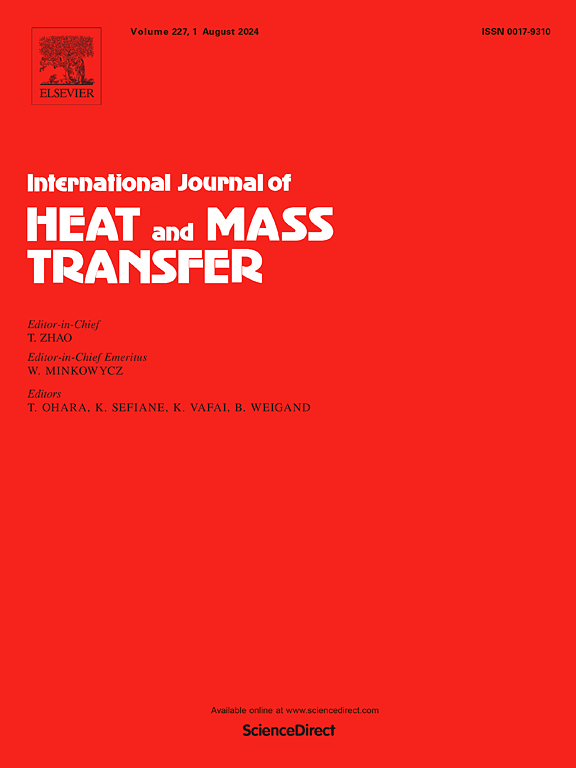Investigation of enhanced pool boiling heat transfer with Fe magnetic thin films electrochemically deposited under different magnetic field orientations
IF 5
2区 工程技术
Q1 ENGINEERING, MECHANICAL
International Journal of Heat and Mass Transfer
Pub Date : 2025-01-18
DOI:10.1016/j.ijheatmasstransfer.2025.126732
引用次数: 0
Abstract
Rapid development of energy technologies depends on the safe and stable operation of systems guaranteed by efficient cooling ability. To increase the heat flux transferred at a minor temperature difference, boiling has a significant advantage compared to other heat transfer methods. This study focuses on enhancing the pool boiling heat transfer using electrochemically deposited Fe magnetic thin films under various magnetic field orientations. It is found that the magnetic field orientation significantly affects the surface morphology of the Fe-thin film. Significant differences are observed for the diameter and arrangement of microcracks and pits on Fe-thin films grown with different magnetic field conditions, and these changes in surface morphology further affect the wettability of the Fe-thin film surface. The Fe-thin film surfaces are used to enhance the pool boiling heat transfer. The results show that by deposition of Fe-thin films, the boiling performance of copper surfaces is enhanced compared to that of the polished copper surface. The critical heat flux and heat transfer coefficient are improved maximally by 30.78 % and 27.55 %, respectively, compared to those without Fe-thin films. It is revealed that the presence of Fe-thin films increases the heat transfer area and nucleation sites due to the modified microstructure, increased roughness, and improved wettability, which jointly enhances the boiling heat transfer.
求助全文
约1分钟内获得全文
求助全文
来源期刊
CiteScore
10.30
自引率
13.50%
发文量
1319
审稿时长
41 days
期刊介绍:
International Journal of Heat and Mass Transfer is the vehicle for the exchange of basic ideas in heat and mass transfer between research workers and engineers throughout the world. It focuses on both analytical and experimental research, with an emphasis on contributions which increase the basic understanding of transfer processes and their application to engineering problems.
Topics include:
-New methods of measuring and/or correlating transport-property data
-Energy engineering
-Environmental applications of heat and/or mass transfer

 求助内容:
求助内容: 应助结果提醒方式:
应助结果提醒方式:


